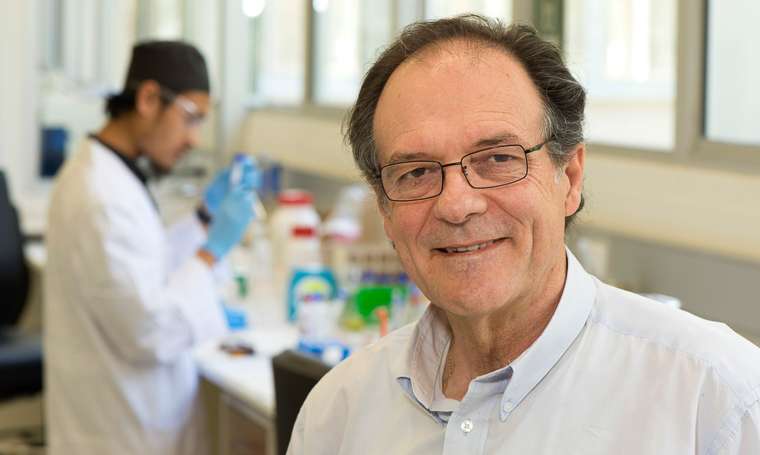Researchers discover 'Holy Grail' of cancer treatment

Researchers are developing nanotech "smart packages" to target and destroy cancer cells more efficiently and reduce side effects.
The smart packages, delivered with chemotherapy drugs, contain folate molecules that seek out and bind to cancer cells, which have lower pH levels than healthy cells.
The packages then release anti-cancer drugs to kill the targeted cells without harming healthy cells in the vicinity.
Professor Colin Raston from Flinders University in South Australia is co-leading the research and said the innovative new system would revolutionise how cancer was treated.
"It is the holy grail of medicine," Prof Raston said.
"The way we have designed the vehicle is that you can use it for any number of different cancer cells or combination of different cancer cells. You can load it up and target them using specific types of drugs, which we know are for those particular cancers."
The small delivery "vehicles" are 100 nanometres in diameter, almost 800 times finer than a human hair, the ideal size for targeting tumours.
"Along the ends of the vehicle are folate molecules that bind to the cancer cell. When it strikes the cells, all of which have low pH levels, it becomes unstable and delivers the anti-cancer drug inside," Prof Raston said.
"The problem with conventional therapy is most of it ends up in sewage. That's a problem, but if you have targeting drug therapy then you only need a small amount of the drug.
"This way you are not polluting the sewage and you are also shutting down all the side effects."
Prof Raston said the research so far had been cell work, but researchers were almost ready to advance to the next phasestage of development.
Lung cancer is the most common cancer in the world, with more than 1.8 million new cases a year. In 2012, the World Cancer Research Fund International reported almost 240,000 cases of ovarian cancer and more than 14 million total cancer cases worldwide. This number is expected to increase to 24 million by 2035.
The research was conducted in collaboration with Dr Jingxin Mo from China's Sun Yat-sen University and Professor Lee Yong Lim from the University of Western Australia.
The proof of concept paper, entitled Paclitaxel-loaded phosphonated calixarene nanovesicles as a modular drug delivery platform has been published in Scientific Reports.
More information: Jingxin Mo et al. Paclitaxel-loaded phosphonated calixarene nanovesicles as a modular drug delivery platform, Scientific Reports (2016). DOI: 10.1038/srep23489
















